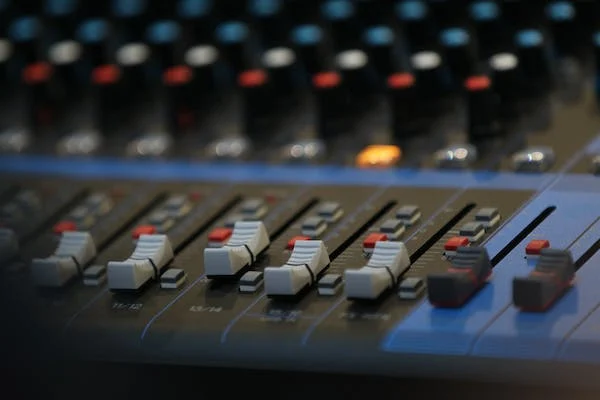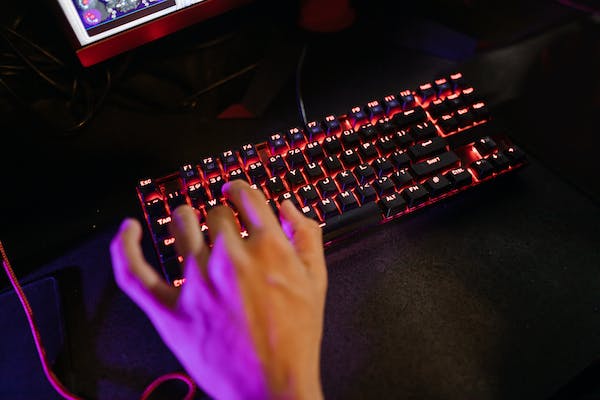Mechanical keyboards are wonderful things, especially if you spend a large part of your day typing like us. If you’re coming from a two-dimensional laptop keyboard, prepare to be wowed, nothing beats the tactile feel and sound of a quality keyboard.
The decision to upgrade to a mechanical keyboard is easy, whether you’re a gamer or a novelist, it always helps to have a quality set of keys to type on. However, once you have decided to invest, there are still many decisions to be made.
For some people, mechanical keyboards are a huge hobby that comes with esoteric jargon, inside jokes, and full credit cards. For the rest of us, getting started can be daunting.
Don’t worry, we’re here to help you make one of the most important decisions for a mechanical keyboard beginner: which switch to choose.
Common Switch Colors and Their Meanings
Key switches are most often referred to by the color of the switch rod, which makes things even more confusing for newcomers, but once you get the hang of it, it’s pretty easy to figure out.
The color scheme generally follows Cherry conventions, since the brand is one of the oldest in this field. Here are the most common options you’ll find:
Red switches
Red switches are the most common linear switches, they are rather quiet and extremely common on gaming keyboards. They are popular for their quick response and smooth feel. On Razer keyboards, these switches are yellow.
Blue switches
Blue keys are the most common keys, providing a strong and proud typewriter feel. It’s one of the most exciting switch types for anyone coming from a cheap rubber-domed keyboard, but the noise can be a little too loud if you’re working with other people. The Razer version of this type of Switch is a Green Switch.
Brown switches
Brown switches are a popular tactile option, offering some of the feels of the blue switch, but creating less noise in the process. Many typists consider them a perfect middle ground between blue and red buttons. Razer calls it an Orange Switch.
Black switches
Black switches are linear and behave like red ones, but require more force to operate. If you’re heavy-handed, you might appreciate them, but they’re probably the least popular of the common switch types.
Silver switches
Silver switches are often referred to as “Speed Silver” and are designed to provide fast response times. Primarily aimed at gamers, silver switches are a non-slippery linear option with a higher actuation point and lower resistance.
Exotic Switch Types
So much for the standard switch types, but the fun doesn’t stop there. There are all kinds of exotic switches for those looking for something a little more unique. There are too many types of switches to mention them all, but below are some of the most popular options.
Topre Switches
Topre switches have a unique electrostatic capacitive design that falls between a mechanical switch and a rubber dome. These are typically tactile switches, with a more pronounced bump than a Cherry MX brown. These switches are famous for the satisfying “thock” sound they produce and are found on keyboards from RealForce, HHKB, and, occasionally, Cooler Master.
Closing spring
Looping spring switches were used on the iconic IBM Model M keyboard, the one responsible for the layout found on the vast majority of keyboards found today. Looping spring switches use, unsurprisingly, a spring that deforms when the key is pressed. It creates incredibly satisfying noise but takes a long time to register repeated keystrokes, making it unsuitable for serious gaming.
Optical switches
The optical switches, on the other hand, are all about gaming performance. They use optical sensors to register the depth of the keystroke, which means you can use each key as a pressure-sensitive control, just like the triggers. analog of an Xbox controller. If you’ve ever wanted to use your keyboard to play racing games, these switches are for you.
Which switch is right for you?
Unfortunately, that’s a question only you can answer. Everyone has different preferences, both in sound and keyboard feel. For example, we like to play with brown Cherry MX keys, whereas most people would recommend red or silver keys.
The descriptions above will give you a good idea of what to expect and will hopefully help you determine which is best for your needs. But in the end, it’s all about feeling and the only way to judge is to try it for yourself.
In the meantime, you can check out our guides to the best keyboards on the market and the best gaming keyboards you can buy.




